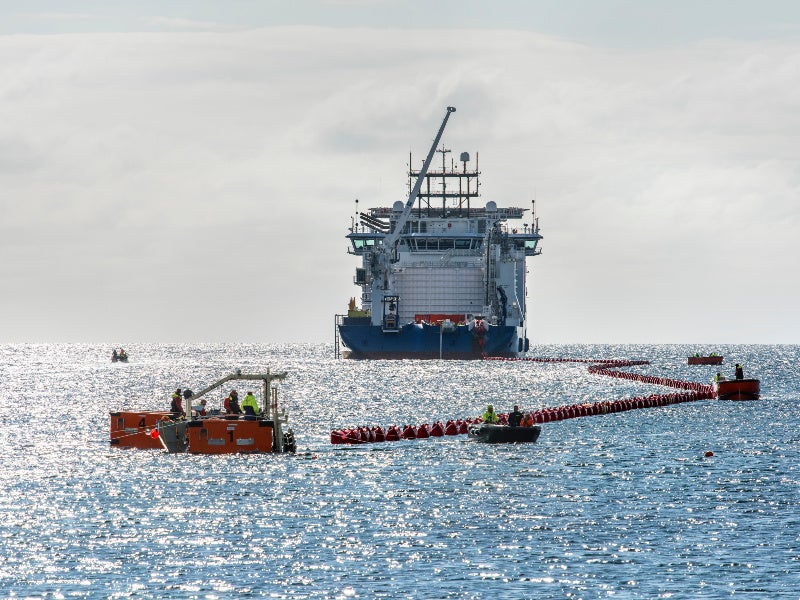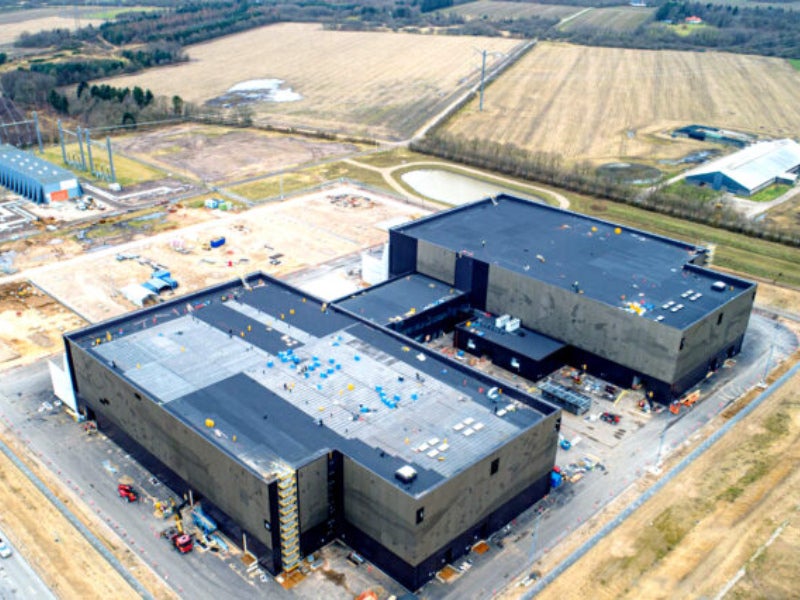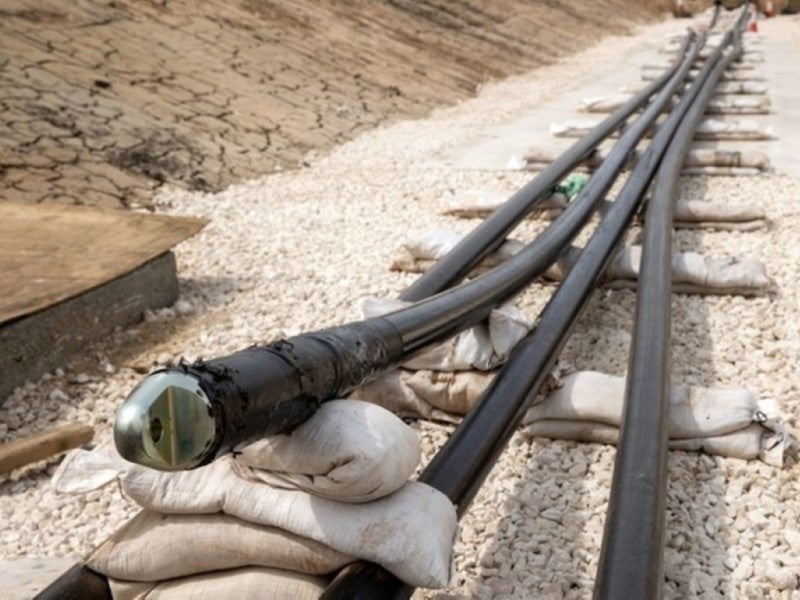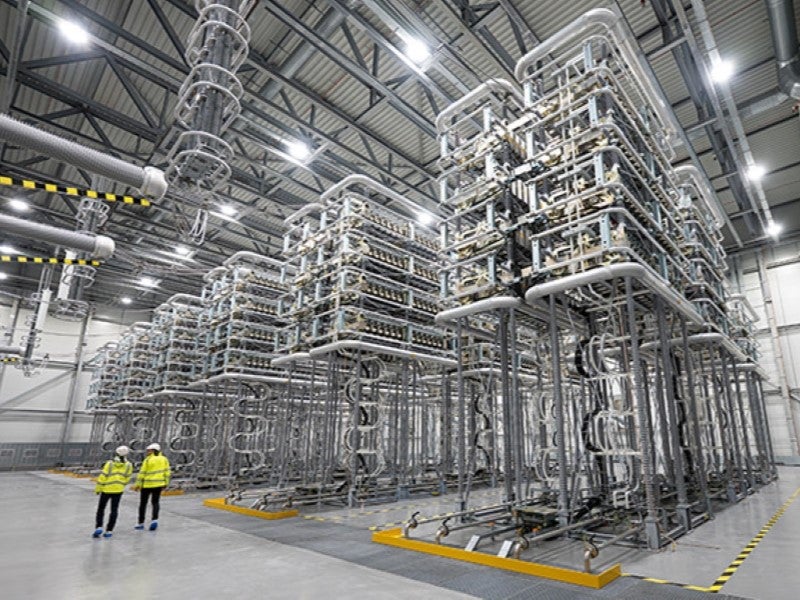Viking Link Interconnector is a 767km-long, high-voltage direct-current (HVDC) transmission link, built to interconnect the electricity networks of Denmark and the UK. It is one of the world’s longest interconnectors.
National Grid Viking Link, a subsidiary of the UK’s National Grid; and Energinet, the Danish national transmission system operator (TSO), developed the interconnector project through a 50:50 joint venture (JV).
The total investment in the project is approximately €2bn ($2.25bn). Construction of the interconnector began in July 2020 and began commercial operations in December 2023.
The Viking Link HVDC Interconnector allows bidirectional transmission of up to 1.4GW of clean energy between the UK and Denmark, ensuring a reliable electricity supply in both countries.
The project provides the UK access to Danish wind power resources and can supply renewable energy to 2.5 million UK homes.
During the first ten years of operations, the interconnector project is expected to bring £500m ($639m) in savings for UK consumers.
Viking Link interconnector project design and route details
The Viking Link Interconnector project connects to the existing 400kV Bicker Fen substation in Lincolnshire, UK, and the 400kV Revsing substation in southern Jutland, Denmark. A converter station was built in each country. Two parallel HVDC submarine cables, each 625km long, were laid in the North Sea to connect the converter stations at both ends.
The converter station converts the transmitted electricity from direct current (DC) to alternating current (AC) and vice versa. From there, the electricity will be transferred to the existing National Grid substation at Bicker Fen.
The project also involved the installation of subsea cables to connect the converter stations to the two countries’ respective substations. The subsea route of the HVDC transmission system goes through the exclusive economic zones (EEZs) of Denmark, Germany, the Netherlands, and the UK.
The Danish side of the project involved two 75km-long onshore underground cables that run between Blabjerg, on the west coast of Jutland, and the Revsing substation. The cables take the subsea route from the Blabjerg landfall site.
On the UK side, the subsea cables make landfall at Boygrfit, East Lindsey. They are connected to a converter station at North Ing Drove, South Holland, through two 66.5km-long underground HVDC cables. These cables are made up of 118 sections.
Construction details
In July 2019, National Grid and Energinet announced their choice of suppliers for cables and converter stations for a significant project. Subsequently, contracts for engineering, procurement, and construction (EPC) were signed in the next month.
Construction commenced in July 2020, with the initial phase involving the creation of an access road to the Bicker Fen converter station site in the UK.
By September 2020, construction activities were initiated in Denmark, with horizontal directional drilling (HDD) operations for the Viking Link land cable route starting from Houstrup Beach near Blaabjerg to the Revsing converter station.
The installation of the final segment of land cable in the UK was completed in December 2022, and the subsea cable laying in the North Sea was concluded in July 2023, executed by Prysmian’s ‘Leonardo da Vinci’ cable laying vessel.
In August of the same year, comprehensive testing of the Viking Link interconnector was finalised. This included testing the cable system from the UK Converter site at Bicker Fen to the Danish Converter site at Revsing at a voltage of 735kV, which is 1.4 times the operational voltage of 525kV, to ensure the integrity of the cable terminations and joints.
Financing
The project secured a green loan worth $743m in June 2020. The loan included $255m from Euler Hermes Export Credit and $488m from Servizi Assicurativi del Commercio Estero (SACE) Export Credit.
The loan facilities were structured by BNP Paribas’ Corporate & Institutional Bank (CIB) and Euler Hermes Agent. HSBC Bank and Natwest provided bookrunner, mandated lead arranger (MLA), lender, and agent services.
Energinet received a ten-year loan of €134.4m ($160.21m) from Nordic Investment Bank (NIB), an international financial institution based in Finland, in March 2021. A second loan worth €201.67m ($225.7m), with a ten-year term, was awarded by NIB in March 2022.
Contractors involved
Siemens Energy was selected to supply and install equipment for the two converter stations of the project.
The cables for the project were manufactured and installed by Prysmian Powerlink and NKT HV Cables. In July 2019, Prysmian was contracted to supply and install 1,400km of submarine and land cables for the project, utilising its Leonardo da Vinci cable-laying vessel. NKT was tasked with supplying 150km of HVDC onshore power cables.
Balfour Beatty was awarded a contract in December 2019 to undertake civil engineering and install 68km of onshore cables across Lincolnshire.
Ian Farmer Associates was chosen for surveying works while the NMCN was engaged to construct the access road to the UK converter station site.
Dutch company Fugro conducted a seabed survey for the Viking Link project.
Munck Piping was responsible for onshore cable installation in Denmark, from the west coast to the Revsing HV substation.
Bravida Danmark was selected by Energinet to install electrical, cooling, plumbing, automation, and HVAC systems at the Revsing converter station.
In December 2015, Intertek and NIRAS were engaged to provide marine consultancy services for the project. Intertek was also appointed in September 2018 to deliver total quality assurance services to support UXO survey and inspection activities.
MT Hojgaard Danmark was contracted by Energinet to construct the converter station at Revsing. Additionally, MJ Eriksson undertook preparatory works on the site at Revsing to facilitate structural works.
Red Penguin Associates, Global Cargo Care, Asso Group, Ramboll and Cavendish Consulting are some of the other contractors involved in the project.






